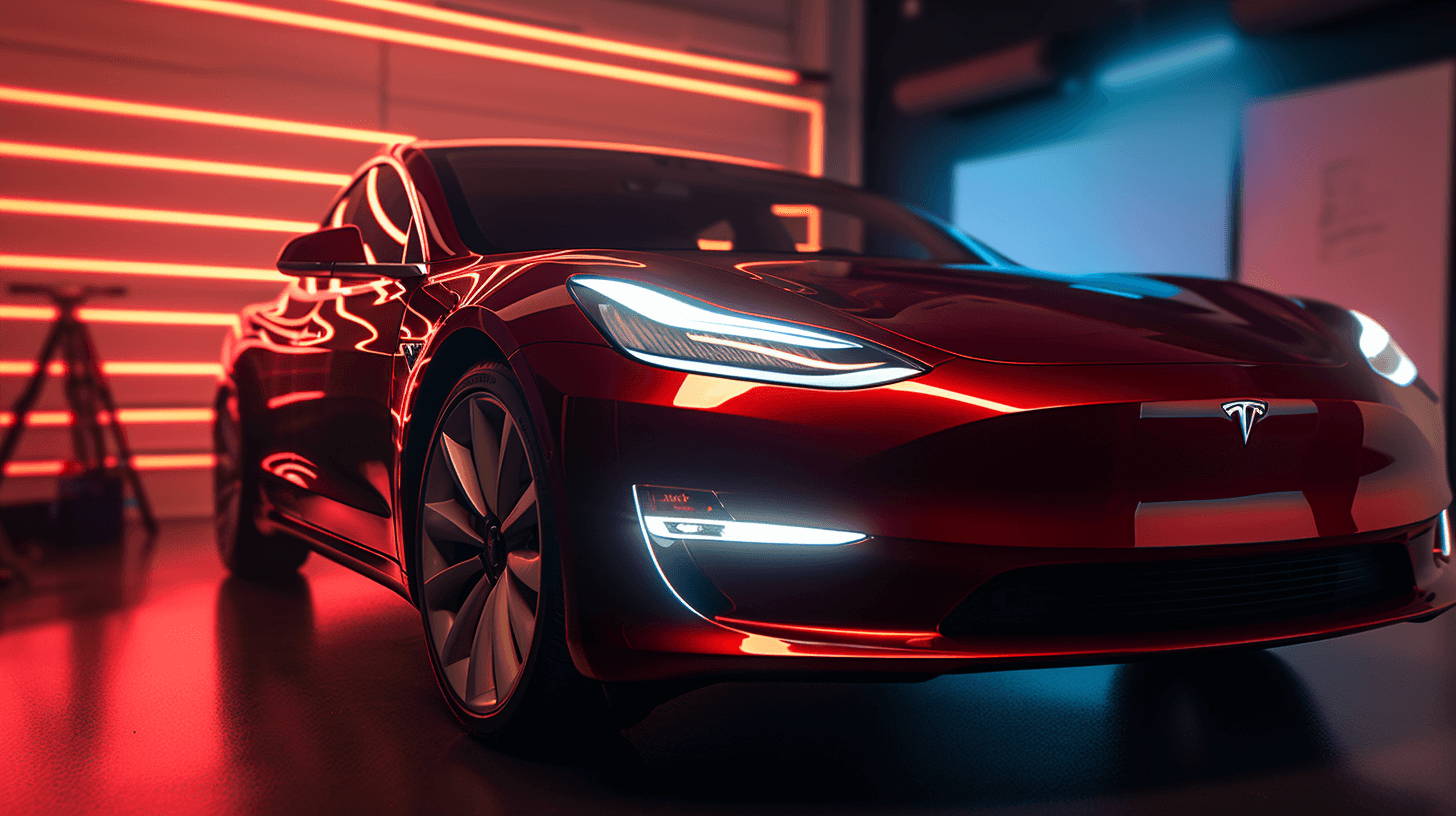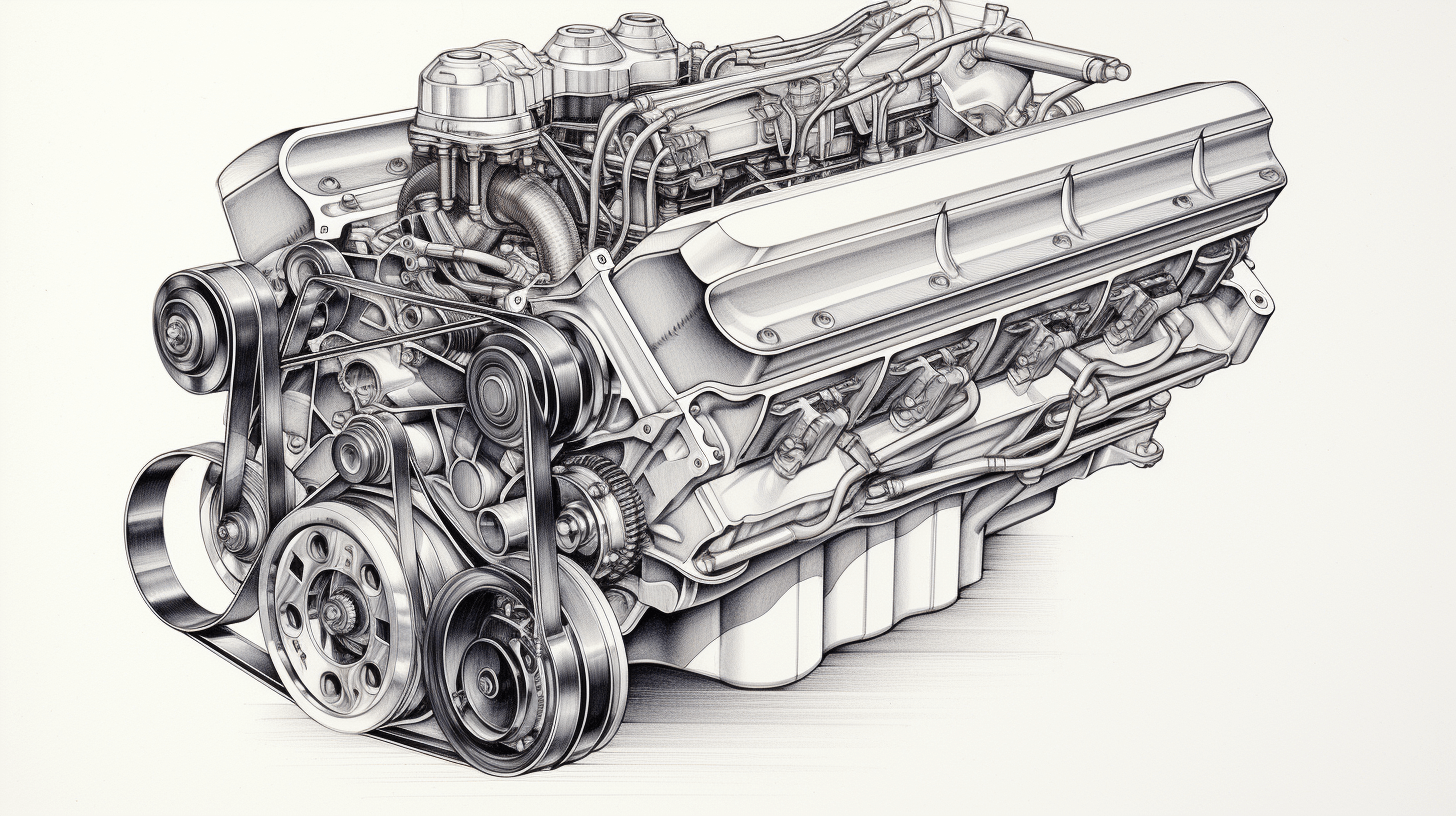🚗💨 Tax Creditz fo’ Elektrik Ka’a Shakin’ Up: Who Stay Gonna Win An Lose? 🌩️🔌
🚗💨 Tax Creditz fo’ Elektrik Ka’a Shakin’ Up: Who Stay Gonna Win An Lose? 🌩️🔌
Da fedral tax creditz fo’ elektrik vehicles stay all buss up, get plenny peepo all pilikia. But, no worry beef curry, get mo’ big changes comin’ dis week. 🔄⚡️
Afta dis Tuesday, get less ka’a dat gonna qualify fo’ da $7,500 tax credit. Some goin’ score da $3,750 credit, an’ some ka’a no goin’ get any credit at all cuz get da new battery source requirements. 🚘🔋
Da new rules, da kine dey wen announce last month, say get some percent of da battery minerals an’ components gotta come from North America o’ one US trade partna. Dey stay tryin’ make da US build mo’ ka’a an’ all dat, an’ da kine wen go inside one big climate bill dat wen shake up da tax credit fo’ elektrik ka’a. 🇺🇸🌍
No can tell which ka’a goin’ be eligible until da IRS make da list, but get plenny car companies dat already know. So, dis wat we know so far. 👀📋
Afta dis Tuesday, less ka’a goin’ get da full $7,500. Da tax credit stay two parts, each worth $3,750. Right now, all da qualifyin’ ka’a get both credits, but afta April 18, da ka’a goin’ get none, one, o’ both. 📆💸
Get some ka’a dat still goin’ get da full $7,500, like da Cadillac Lyriq, Chevy Silverado EV, Tesla Model Y, Tesla Model 3 (Performance), Ford F-150 Lightning, Lincoln Aviator Grand Touring, an’ Chrysler Pacifica plug-in hybrid. 🚗🚙
An’ get some ka’a dat goin’ get eitha $3,750 o’ $7,500, but da car companies not shua yet, like da Chevy Bolt, Chevy Bolt EUV, an’ Volkswagen ID.4 (only da ones built in Tennessee). 🔍💰
Den get some dat goin’ get jus’ one tax credit fo’ $3,750, like da Tesla Model 3 RWD, Mustang Mach-E, Ford E-Transit, Ford Escape plug-in hybrid, Lincoln Corsair Grand Touring plug-in hybrid, Jeep Wrangler 4xe, an’ Jeep Grand Cherokee 4xe. 🚘🤔
But no fo’get, get da kine Volvo S60 (PHEV), Extended Range an’ T8 Recharge (Extended Range) dat no goin’ get any tax credit afta April 18. 🙅♂️💔
An’ get plenny mo’ ka’a dat stay eligible fo’ da full credit now, but no can tell wat goin’ happen afta April 18, like da Audi Q5 TFSI e Quattro, BMW 330e, BMW X5 xDrive45e, Genesis Electrified GV70, Nissan Leaf (all da models), Rivian R1S, an’ Rivian R1T. ⏳🤷♀️
So, if you stay tinkin’ ’bout gettin’ one Model Y o’ Ford Lightning, no goin’ change notting. You still goin’ get da full $7,500 credit. But if you get yo’ eyez on one Mustang Mach-E o’ you stay waitin’ fo’ one Tesla Model 3 RWD, if you get um delivered on Monday instead of Tuesday, you could score $3,750 mo’ in tax savings. 🤑💨
But yah, wat da kine stay happenin’ wit da tax credit changin’ again? Last year, da climate law, da one da Biden admin wen push, wen change da tax credit fo’ elektrik ka’a an’ wen add mo’ restrictions fo’ make shua da US supply chains stay solid. 🌬️💡
Da idea stay dat da car companies dat like take advantage of da tax credit gotta follow da rules fo’ boost da US-based production. Da rules get all kine tings, like da manufacturin’ of da car an’ da materials dat go inside da batteries of da vehicles. 🔋🏭
One of da $3,750 credits focus on da raw materials inside da batteries, like lithium, graphite, an’ cobalt. Gotta have one certain percent of dem mined o’ processed in da US o’ one trade partna. Da odda $3,750 credit stay ’bout da battery manufacturin’, like anodes, cathodes, an’ electrolytes, gotta be manufactured o’ assembled in North America. 🌎🔧
Da IRS wen figgah out da rules las’ month, an’ das why get all dis change in which ka’a stay eligible fo’ da tax credit. But no fo’get: jus’ cuz you stay ‘eligible’ no mean you goin’ get da tax credit fo’ shua. 📑🤷♂️
Still get odda requirements dat apply. Ka’a gotta meet battery size an’ vehicle weight requirements, an’ mo’ importan’ tings like:
- Be assembled in North America
- Get one sticker price less dan $55,000 fo’ ka’a an’ $80,000 fo’ SUVs an’ trucks
Features can make da sticker price mo’ high, an’ assembly locations can be diff’rent, so fo’ each ka’a, da buya gotta check dat dose requirements an’ price limits stay met. An’ if you like one elektrik ka’a, betta check yo’ income too. 💲💼
No jus’ da ka’a dat need qualify: get one income cap fo’ da buyas. Based on “modified adjusted gross income” — yo’ income afta some deductions (like retirement contributions). Da caps fo’ new vehicles stay:
- $300,000 fo’ married couples filing jointly
- $225,000 fo’ heads of households
- $150,000 fo’ all odda filers
You qualify if you wen make less dan da cap in eitha da current tax year o’ da previous year, so one year of high income no goin’ disqualify you. 📈💵
Next year, in 2024, dis goin’ change. You goin’ get da tax credit as one immediate discount on da price. So long as you qualify, you goin’ get da benefit — no matta how big yo’ tax bill. 💳✨
How ’bout used vehicles? Get one lowa tax credit fo’ used elektrik vehicles, an’ no goin’ change. Da income caps fo’ used vehicles stay:
- $150,000 fo’ married couples filing jointly
- $112,500 fo’ heads of households
- $75,000 fo’ all oddah filers
Fo’ used vehicles, da list of requirements no stay too long:
- You gotta buy da used EV from one dealah, not one private party.
- Each vehicle can only claim da used credit once, so no can be sold fo’ da used vehicle tax credit already.
- Da vehicle gotta be at least two years old, an’ meet weight an’ battery size requirements (get one list of qualifyin’ vehicles).
- Da purchase price gotta be $25,000 o’ less.
Da last part might be da biggest challenge. Accordin’ to Cox Automotive, prices fo’ used EVs stay comin’ down, but da average listing price las’ quartah stay $43,400. But if you find one qualifyin’ vehicle, you can get one tax credit worth 30% of da sale price, up to one cap of $4,000.
Wanna lease? No problem, brah. Leased vehicles qualify fo’ one separate $7,500 tax credit wit no restrictions on price, income, o’ where da car was built. But get one small kine catch: da tax credit fo’ one leased vehicle go to da leasing company, not directly to da drivah, so make shua yo’ contract ackshully pass da discount along to you.
Da tax credits still goin’ change. These rules still stay in flux in plenny ways, like:
- Automakers stay hustlin’ fo’ change dea supply chains so mo’ ka’as goin’ qualify ova time…
- Every year, da required percentages goin’ get highah, an’ new restrictions on Chinese components goin’ kick in too. So fewer ka’as might qualify.
- Buyahs goin’ get da credit as one discount at da dealership, instead of one credit on dea own taxes, startin’ nex’ year.
- Da way da IRS implements these rules could change. Da current implementation stay gettin’ beef from some membahs of Congress, who tink da Biden administration wen add so much flexibility fo’ automakers dat it undamines da goal of da legislation.
So dat stay all fo’ now, but remembah, tings can always change. Keep yo’ eyez peeled fo’ any updates an’ news ’bout da tax credits fo’ elektrik ka’a. 🚗⚡🌴
NOW IN ENGLISH
🚗💨 Tax Credits for Electric Cars Shaking Up: Who’s Going to Win and Lose? 🌩️🔌
The federal tax credits for electric vehicles have been all messed up, causing confusion for many people. But don’t worry, there are more significant changes coming this week. 🔄⚡️
After this Tuesday, fewer cars will qualify for the $7,500 tax credit. Some will receive a $3,750 credit, and some cars won’t get any credit at all due to new battery source requirements. 🚘🔋
The new rules, announced last month, require a specific percentage of battery minerals and components to come from North America or a US trade partner. They aim to increase US car production and were included in a significant climate bill that shook up the tax credit for electric cars. 🇺🇸🌍
We won’t know which cars will be eligible until the IRS releases the list, but many car companies already have an idea. So, this is what we know so far. 👀📋
After this Tuesday, fewer cars will get the full $7,500. The tax credit is in two parts, each worth $3,750. Right now, all qualifying cars get both credits, but after April 18, cars will get none, one, or both. 📆💸
Some cars will still get the full $7,500, like the Cadillac Lyriq, Chevy Silverado EV, Tesla Model Y, Tesla Model 3 (Performance), Ford F-150 Lightning, Lincoln Aviator Grand Touring, and Chrysler Pacifica plug-in hybrid. 🚗🚙
And some cars will get either $3,750 or $7,500, but the car companies aren’t sure yet, like the Chevy Bolt, Chevy Bolt EUV, and Volkswagen ID.4 (only those built in Tennessee). 🔍💰
Then some will get just one tax credit for $3,750, like the Tesla Model 3 RWD, Mustang Mach-E, Ford E-Transit, Ford Escape plug-in hybrid, Lincoln Corsair Grand Touring plug-in hybrid, Jeep Wrangler 4xe, and Jeep Grand Cherokee 4xe. 🚘🤔
But don’t forget, the Volvo S60 (PHEV), Extended Range, and T8 Recharge (Extended Range) won’t get any tax credit after April 18. 🙅♂️💔
And there are many more cars currently eligible for the full credit, but it’s uncertain what will happen after April 18, like the Audi Q5 TFSI e Quattro, BMW 330e, BMW X5 xDrive45e, Genesis Electrified GV70, Nissan Leaf (all models), Rivian R1S, and Rivian R1T. ⏳🤷♀️
So, if you’re thinking about getting a Model Y or Ford Lightning, nothing will change. You’ll still get the full $7,500 credit. But if you have your eyes on a Mustang Mach-E or are waiting for a Tesla Model 3 RWD, getting it delivered on Monday instead of Tuesday could score you $3,750 more in tax savings. 🤑💨
But why is the tax credit changing again? Last year, the climate law, backed by the Biden administration, changed the tax credit for electric cars and added more restrictions to ensure solid US supply chains. 🌬️💡
The idea is that car companies wanting to take advantage of the tax credit need to follow rules to boost US-based production. The rules involve the manufacturing of the car and the materials used in the batteries of the vehicles. 🔋🏭
One of the $3,750 credits focuses on the raw materials inside the batteries, like lithium, graphite, and cobalt. A certain percentage of them must be mined or processed in the US or a trade partner. The other $3,750 credit is about battery manufacturing, such as anodes, cathodes, and electrolytes, which must be manufactured or assembled in North America. 🌎🔧
The IRS figured out the rules last month, and that’s why there are changes in which cars are eligible for the tax credit. But remember: just because you’re ‘eligible’ doesn’t mean you’ll definitely get the tax credit. 📑🤷♂️
Other requirements still apply. Cars must meet battery size and vehicle weight requirements, and other important factors like:
- Being assembled in North America
- Having a sticker price below $55,000 for cars and $80,000 for SUVs and trucks
Features can make the sticker price higher, and assembly locations can be different, so for each car, buyers must check that these requirements and price limits are met. And if you’re interested in an electric car, be sure to check your income as well. 💲💼
Not just the car needs to qualify: there’s an income cap for buyers. Based on “modified adjusted gross income” — your income after some deductions (like retirement contributions). The caps for new vehicles are:
- $300,000 for married couples filing jointly
- $225,000 for heads of households
- $150,000 for all other filers
You qualify if you made less than the cap in either the current tax year or the previous year, so one year of high income won’t disqualify you. 📈💵
Next year, in 2024, this will change. You’ll get the tax credit as an immediate discount on the price. As long as you qualify, you’ll get the benefit — no matter how big your tax bill. 💳✨
How about used vehicles? There is a lower tax credit for used electric vehicles, and it won’t change. The income caps for used vehicles are:
- $150,000 for married couples filing jointly
- $112,500 for heads of households
- $75,000 for all other filers
For used vehicles, the list of requirements isn’t too long:
- You must buy the used EV from a dealer, not a private party.
- Each vehicle can only claim the used credit once, so it can’t have been sold for the used vehicle tax credit already.
- The vehicle must be at least two years old and meet weight and battery size requirements (there’s a list of qualifying vehicles).
- The purchase price must be $25,000 or less.
The last part might be the biggest challenge. According to Cox Automotive, prices for used EVs are coming down, but the average listing price last quarter was $43,400. But if you find a qualifying vehicle, you can get a tax credit worth 30% of the sale price, up to a cap of $4,000.
Want to lease? No problem. Leased vehicles qualify for a separate $7,500 tax credit with no restrictions on price, income, or where the car was built. But there’s a small catch: the tax credit for a leased vehicle goes to the leasing company, not directly to the driver, so make sure your contract actually passes the discount along to you.
The tax credits will still change. These rules are still in flux in many ways, like:
- Automakers are working to change their supply chains so more cars will qualify over time
- Every year, the required percentages will get higher, and new restrictions on Chinese components will kick in too. So fewer cars might qualify.
- Buyers will get the credit as a discount at the dealership, instead of a credit on their own taxes, starting next year.
- The way the IRS implements these rules could change. The current implementation is getting criticized by some members of Congress, who think the Biden administration added so much flexibility for automakers that it undermines the goal of the legislation.
So that’s all for now, but remember, things can always change. Keep your eyes peeled for any updates and news about the tax credits for electric cars. 🚗⚡🌴






